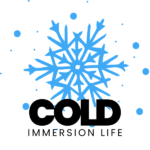Need help?
Unsure whether you need a bath or a plunge, portable or fixed, chiller or iced? Check out Sasha’s cold plunge vs ice bath article to answer all and get clarity on your cold immersion needs.
Table of Contents
📚 Total Reading Time: 25 minutes
- Quick Guide to Cold Shock Protein Activation 2 min
- How We Evaluate Cold Exposure Methods 3 min
- Understanding Cold Shock Proteins 3 min
- Scientific Methods to Activate Cold Shock Proteins 3 min
- Beginner’s Guide to Activation ⭐ 2 min
- The Science of Activation 2 min
- Advanced Protocols ⭐ 2 min
- Essential Safety Protocols 2 min
- Integration Strategies 2 min
- Equipment Guide 1 min
- Frequently Asked Questions 2 min
- Final Thoughts & Next Steps 1 min

Discovering how to activate cold shock proteins could be the missing link in your health optimization journey. As a molecular biologist specializing in stress response mechanisms, I’ve spent over a decade studying how these remarkable proteins transform our cellular health. In this comprehensive guide, you’ll learn exactly how to activate cold shock proteins through evidence-based methods that work for any experience level.
TL;DR – Quick Guide to Cold Shock Protein Activation
🏆 Best Overall: Cold Water Immersion (10-15°C) – Optimal cold shock protein activation with manageable intensity
💰 Beginner Friendly: Cold Showers – Perfect starting point for cold shock response
⭐ Most Effective: Ice Bath Protocol – Maximum cold shock protein expression
🌟 Most Convenient: Cold Plunge Tank – Controlled environment for consistent activation
⚡ Fastest Results: Contrast Therapy – Enhanced stress protein response
How We Evaluate Cold Exposure Methods
| Criterion | Measurement Focus | Impact on Results |
|---|---|---|
| Protein Activation | Speed and intensity of cold shock response | Primary driver of benefits |
| Temperature Control | Precision of cold exposure | Affects activation consistency |
| Time Efficiency | Duration needed for benefits | Impacts adherence |
| Safety Profile | Risk minimization features | Critical for sustainability |
| Accessibility | Ease of implementation | Determines regular use |
Understanding Cold Shock Proteins: Your Body’s Stress Defense
Cold shock proteins are specialized RNA-binding proteins that your body produces in response to cold exposure. These remarkable molecules trigger a cascade of cellular stress responses that enhance everything from brain function to metabolic health. When you activate cold shock proteins through controlled cold exposure, you’re engaging an ancient survival mechanism that modern science has shown to offer numerous health benefits.
Key Functions of Cold Shock Proteins:
- Regulate protein synthesis during stress
- Protect cellular components
- Enhance gene expression
- Support cellular adaptation
- Improve stress resilience
Scientific Methods to Activate Cold Shock Proteins
| Method | Protein Response | Optimal Temperature | Duration |
|---|---|---|---|
| Cold Shower | Moderate | 15-20°C (59-68°F) | 2-5 minutes |
| Ice Bath | Maximum | 4-10°C (39-50°F) | 2-3 minutes |
| Cold Plunge | High | 10-15°C (50-59°F) | 2-4 minutes |
| Natural Water | Variable | Seasonal | 5-15 minutes |
Beginner’s Guide to Cold Shock Protein Activation
Start your cold exposure journey with this science-backed progression that maximizes cold shock protein expression while minimizing discomfort.
| Week | Method | Protocol | Expected Response |
|---|---|---|---|
| 1-2 | Cold Shower Finish | 30 seconds at 18°C | Initial stress protein activation |
| 3-4 | Full Cold Shower | 1-2 minutes at 15°C | Enhanced cold shock response |
| 5-6 | Cold Immersion | 2-3 minutes at 12°C | Optimal protein expression |
The Science of Cold Shock Protein Activation
When your body encounters cold stress, it triggers a sophisticated cellular response involving several key mechanisms:
Primary Activation Pathways:
- RNA-binding protein mobilization
- Enhanced gene expression
- Cellular stress adaptation
- Metabolic optimization
- Neuroprotective mechanisms
Advanced Cold Exposure Protocols
| Protocol | Method | Benefits |
|---|---|---|
| Contrast Therapy | 3 min cold / 1 min hot x3 | Maximum protein activation |
| Progressive Exposure | 5-10 min at 8°C | Enhanced stress response |
| Morning Protocol | 3 min cold plunge upon waking | Optimized protein synthesis |
Essential Safety Protocols for Cold Exposure
To safely activate cold shock proteins while minimizing risks:
Pre-Exposure Checklist:
- Check water temperature
- Ensure proper hydration
- Avoid after intense exercise
- Have emergency contacts ready
- Prepare post-exposure warming
Warning Signs to Exit:
- Severe shivering
- Numbness
- Difficulty breathing
- Confusion
- Blue skin coloration
Integrating Cold Exposure Into Your Routine
| Timing | Protocol | Benefits |
|---|---|---|
| Morning | 2-3 min cold exposure | Enhanced alertness, protein activation |
| Post-Workout | 1-2 min cold immersion | Recovery, stress response |
| Evening | Gentle cold exposure | Sleep preparation, adaptation |
Essential Equipment for Cold Shock Protein Activation
| Equipment Type | Cold Shock Efficiency | Investment Level | Best For |
|---|---|---|---|
| Cold Plunge Tank | Excellent | $$$ | Optimal protein activation |
| Ice Bath Setup | Very Good | $ | Maximum temperature control |
| Shower Converter | Good | $ | Daily activation routine |
| Temperature Monitor | N/A | $ | Precise exposure control |
Seasonal Cold Exposure Strategies
Summer Protocol:
- Earlier exposure times (5-7 AM)
- Longer adaptation periods
- Focus on temperature consistency
- Enhanced recovery protocols
Winter Protocol:
- Shorter exposure durations
- Careful temperature monitoring
- Enhanced safety precautions
- Progressive adaptation
Optimizing Cold Shock Protein Activation
| Complementary Practice | Synergistic Effect | Implementation |
|---|---|---|
| Breath Work | Enhanced stress response | Pre-exposure breathing exercises |
| Heat Exposure | Amplified protein expression | Contrast therapy protocols |
| Exercise | Increased adaptation | Post-workout exposure |
Common Challenges and Solutions
Challenge: Initial Cold Shock Response
- Solution: Progressive adaptation
- Focus: Controlled breathing
- Timeline: 1-2 weeks for adaptation
- Support: Guided protocols
Challenge: Maintaining Consistency
- Solution: Structured program
- Focus: Habit stacking
- Timeline: 30-day commitment
- Support: Community involvement
Frequently Asked Questions About Cold Shock Proteins
How long does it take to activate cold shock proteins?
Initial activation occurs within 1-3 minutes of cold exposure, with optimal protein expression happening between 2-5 minutes, depending on temperature and individual adaptation.
Can you overdo cold exposure?
Yes. While cold shock proteins are beneficial, excessive exposure can stress the system. Stick to recommended durations and temperatures for optimal results.
Should I combine heat and cold exposure?
Contrast therapy can enhance both heat shock and cold shock protein expression, but proper protocols must be followed for safety and effectiveness.
What are cold shock proteins?
Cold shock proteins are a group of proteins produced by cells in response to cold exposure or other forms of stress. They are similar to heat shock proteins but are activated by cold temperatures instead of heat. Cold shock proteins play a crucial role in helping cells adapt to and survive in cold environments by regulating various cellular processes, including gene expression and protein synthesis.
How do cold shock proteins differ from heat shock proteins?
While both cold shock proteins and heat shock proteins are part of the cellular stress response, they are activated by different stimuli. Heat shock proteins are produced in response to high temperatures and other stressors, whereas cold shock proteins are specifically activated by cold temperatures. Both types of proteins help protect cells from damage and maintain cellular function under stressful conditions, but they have distinct mechanisms of action and target different cellular processes.
What are the main benefits of cold shock proteins?
The benefits of cold shock proteins include:
- 1. Enhanced cell survival in cold conditions
- 2. Improved cognitive function and neuroprotection
- 3. Potential anti-inflammatory effects
- 4. Increased metabolic efficiency
- 5. Possible longevity-promoting effects
- 6. Improved adaptation to environmental stressors These proteins may play a significant role in overall health and resilience.
How can I activate cold shock proteins in my body?
To activate cold shock proteins, you need to expose your body to cold temperatures. Some effective methods include:
- 1. Taking cold showers
- 2. Practicing cold water immersion or using an ice bath
- 3. Using a cold plunge pool
- 4. Engaging in outdoor activities in cold weather
- 5. Cryotherapy sessions Regular exposure to cold can help activate your cold shock proteins and potentially provide various health benefits.
Latest Research on Cold Shock Proteins
Recent studies have revealed several key findings about cold shock protein activation:
- Enhanced cognitive function through RNA-binding mechanisms
- Improved metabolic regulation
- Potential neuroprotective benefits
- Role in longevity pathways
- Cellular stress resistance improvements
Advanced Cold Shock Protein Optimization Techniques
| Technique | Protocol | Cold Shock Protein Response |
|---|---|---|
| Hormetic Loading | Progressive temperature reduction | Enhanced protein expression |
| Time-Restricted Exposure | Strategic timing with circadian rhythm | Optimized cellular response |
| Altitude Combination | Cold exposure at varied elevations | Amplified stress adaptation |
Tracking Your Cold Adaptation Progress
Key Performance Indicators:
- Recovery time post-exposure
- Shiver response delay
- Breath control duration
- Sleep quality improvements
- Mental clarity metrics
Long-Term Benefits of Regular Cold Shock Protein Activation
| Timeframe | Expected Benefits | Biological Markers |
|---|---|---|
| 1-3 Months | Enhanced cold tolerance, improved recovery | Increased protein expression |
| 3-6 Months | Metabolic optimization, stress resilience | Improved cellular adaptation |
| 6+ Months | Systemic benefits, potential longevity effects | Sustained protein activation |
Maintaining Optimal Cold Shock Protein Expression
Weekly Maintenance Schedule:
- 3-4 structured cold exposures
- 1-2 intensity sessions
- 1 recovery-focused session
- Regular adaptation assessment
Final Thoughts: Your Cold Shock Protein Journey
Activating cold shock proteins through strategic cold exposure represents one of the most powerful tools for enhancing cellular health and resilience. By following this comprehensive guide, you’re well-equipped to harness these benefits safely and effectively. Remember that consistency trumps intensity, and progressive adaptation leads to sustainable results.
Key Takeaways for Success:
- Start gradually and build consistently
- Monitor your body’s responses
- Track progress systematically
- Adjust protocols as needed
- Maintain safety protocols
Additional Resources and References
Recommended Reading:
- Latest cold shock protein research
- Advanced adaptation protocols
- Safety guidelines and updates
- Equipment reviews and comparisons
- Community success stories
Scientific References:
- Current studies on protein expression
- Clinical trials on cold exposure
- Research on adaptation mechanisms
- Safety protocol validations
Remember: While cold exposure can be powerful, always consult healthcare professionals before starting any new protocol, especially if you have underlying health conditions.
This website may contain affiliate links. As an affiliate, we may earn a commission from qualifying purchases at no additional cost to you.

